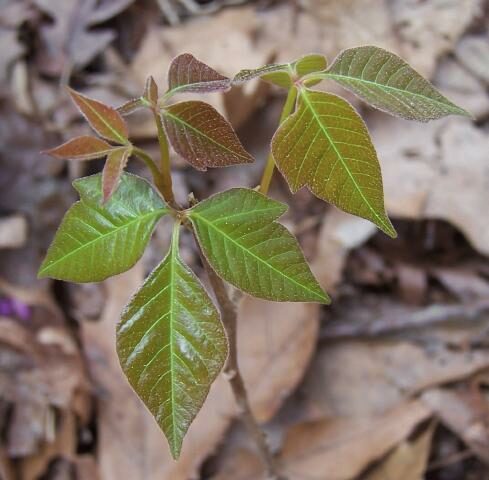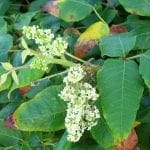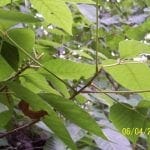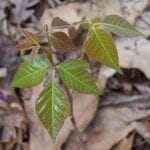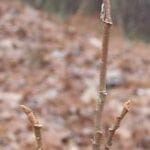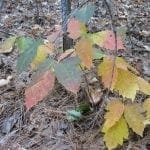- Flowers
- Winter fruit appearance
- Berries forming
- Summer foliage
- Spring growth has a bronze tone
- Winter twig
- Fall color
Scientific Name:
Toxicodendron radicans
Common Name:
Poison Ivy
Scientific Name Pronounciation:
toks-ee-ko-DEN-dron RAD-ee-kans
Plant Type:
Vine
Plant Hardiness Zones:
3-10
Plant Hardiness Zone(s):
Usual Size:
1-5 ft. H X 3-5 ft. W shrub form; 30 ft. H
Flower:
Flowers small and yellowish-green, borne in clusters
Bloom Time Notes:
Late Spring
Leaf:
Deciduous; alternate; compound with 3 leaflets; leaflets are ovate and irregularly toothed; shiny green above, paler below.
Fruit:
Greenish-white berries; round, about 1/4 inch in diameter; borne in hanging clusters; ripe in late summer; persists through winter; fruit is a favorite food for birds who spread the seed widely.
Wildlife:
Birds adore the berries.
Natural Habitat:
Prairies; woodlands; glades; waste ground; fence rows; bluffs; thickets; roadsides; railroads; nearly everywhere.
Propagation:
Fruit and division. Small pieces of root dug up with other plants can grow to be new plants.
Bloom Time:
Sun or Shade:
Companion Plants:
Cultural Notes:
Poison Ivy (Toxicodendron radicans) prefers rich soil with good drainage and plenty of water, but can grow almost anywhere; likes full sun, but can tolerate partial shade. Plant can grow in vine or shrub form; most people get an intensely itchy rash from contact with the volatile oil urushiol in this plant; oil is in all parts of the plant; oil can remain in dead parts more than one year; oil on clothes or pets can be transferred and cause rash; remember - leaflets three, leave it be.
Other Scientific Names: Rhus radicans

